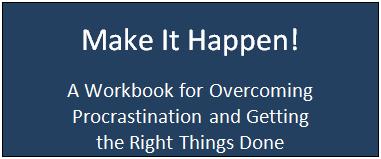 In my last post I wrote about the first six lessons for creating inner peace which are set forth by Dr. Gerald G. Jampolsky in the book “Love is Letting of of Fear”. In this post you’ll discover Lessons 7 – 12.
In my last post I wrote about the first six lessons for creating inner peace which are set forth by Dr. Gerald G. Jampolsky in the book “Love is Letting of of Fear”. In this post you’ll discover Lessons 7 – 12.
To recap, the basic message of Dr. Jampolsky’s book is the following: “There are only two emotions; one is Love and the other is Fear. Love is our true reality. Fear is something our mind has made up, and is therefore unreal.”
Lesson 7: Today I Will Judge Nothing That Occurs
Lesson 7 states the following: “Today I Will Judge Nothing That Occurs”. Most of us are constantly judging others. In addition, we tend to look at others through “tunnel vision”. That is, we only see fragments of other people. And since our home and school environments when we were growing up placed a lot of emphasis on “constructive criticism”, what we tend to notice most of all in others are their faults.
Not judging others is another way of letting go of fear and experiencing love. Since judging is something that we do automatically, we may feel that it’s impossible to stop. However, as with any other habit, we can stop through repeated and sustained practice. We must get rid of the evaluator part of ourselves and practice acceptance.
Here’s a quote from “Love Is Letting Go of Fear”:
“See everyone you meet or think of as either extending Love, or as being fearful and sending out a call for help, which is a request for love.”
If we want peace of mind, it’s essential that both our verbal and non-verbal communications with others bring about a sense of joining. We can achieve this through acceptance, not through fault-finding or condemning. To paraphrase Hugh Prather who wrote the Foreword to “Love Is Letting Go of Fear”:
We’re all in this together, all of our differences are superficial and meaningless, and only the countless ways we are alike has any importance at all.
Eliminate the following:
- Any words that place you or anyone else in a category.
- Any words that tend to measure or evaluate you or other people.
- Any words that tend to judge or condemn you or someone else.
Lesson 8: This Instant Is the Only Time There Is
There’s a quote from Eugene O’Neill that states the following: “There is no present or future, only the past happening over and over again – now.” What a nightmare! This quote reflects what a lot of people experience in their lives: because they’re constantly superimposing their past on the present and on the future, they keep reliving their past over and over again.
However, as Lesson 8 indicates, the present is all there is. We simply need to allow ourselves to experience the now by releasing the past.
Think of the present moment as the clear blue sky that’s suddenly cast over with dark clouds,which represent thoughts of the past. If you push those clouds out of the way, you’re left with the peace of the present moment. The future then becomes an extension of this peaceful present.
Here’s another analogy: you’re watching television, but there’s a lot of static so you can’t see the image on the screen clearly. Your thoughts about the past are the static. If you can get rid of the static–by releasing your thoughts about the past–you’ll be able to see that the show that’s playing on the TV is one of peace and love.
Keep reminding yourself of the following: the past is over and the future is yet to be. This instant is all there is. To look at this instant is to experience peace.
Lesson 9: The Past Is Over It Can Touch Me Not
Lesson 9 states the following: “The Past Is Over It Can Touch Me Not”.
The main reason that people have a tendency to color the present with the past is that they mistakenly think that they have to protect themselves from being hurt again in the future. However, the past is over. The only way the past can continue to hurt anyone is if they keep thinking about their past experiences–thereby pulling those past experiences into the present moment–, and if they worry that their future is going to look like their past.
Recognize that holding on to the fear and guilt of the past is not going to get you what you want. Dr. Jampolsky recommends that you let each second be a new birth experience. This results in releasing yourself and others from all errors of the past. It will allow you to experience the love that is present in the now.
Rid yourself of the past: release all of the pain, guilt, and fearful thoughts of the past. Say the following to yourself: “I forgive my misperceptions”.
Lesson 10: I Could See Peace Instead of This
Lesson 10 states the following: “I Could See Peace Instead of This”.
When we believe that our happiness or unhappiness is determined by the events in our environment and by the way in which others react to us, we relinquish our responsibility over how we feel. After all, if we subscribe to this worldview, how we feel is not up to us: it depends on others and on what is happening around us. Surrendering how we feel to others and to the circumstances in our environment is a recipe for unhappiness, fear, and anger.
Anyone can take back responsibility for how they feel by instructing their mind to change their perceptions of the world and everything in it whenever they begin to feel a negative emotion. Peace of mind is an internal matter.
You can choose to perceive any situation that you may be facing in a way that will lead to thoughts of conflict, or in away that will lead to thoughts of peace. Thoughts of peace lead to a peaceful mind. And it is from a peaceful mind that a peaceful perception of the world is experienced.
Whenever you feel that your peace is threatened by anything or anyone, repeat the following to yourself: I could see peace instead of this. You have been given everything that you need to be happy now.
Lesson 11: I Can Elect to Change All Thoughts that Hurt
When most people think of willpower, what usually comes to mind is getting themselves to stop eating a donut every afternoon when they begin to feel sluggish, or getting themselves to exercise for half an hour each day after work. The first time that I read about using your will to keep your mind focused on positive thoughts was when I read “The Science of Getting Rich” by Wally Wattles. Dr. Jampolsy also recommends that you use your willpower in order to choose thoughts of peace and love.
Lesson 11 states the following: “I Can Elect to Change All Thoughts That Hurt”.
At any moment you can choose to think thoughts that can hurt you, or you can choose to think thoughts that can help you. The way in which you constantly choose to think thoughts that can help you is by using your willpower to make that choice. Just as you can make the choice between eating an apple or having a chocolate bar, you can make the choice to hold thoughts in your mind that lead to conflict, or to think thoughts that lead to love.
Set the following intent: throughout the day I will remain aware of my thoughts, and I will change any thoughts that hurt me to thoughts that help me.
Lesson 12: I Am Responsible for What I See
Lesson 12 is very short. It simply states the following: “I am responsible for what I see. I choose the feelings I experience, and I decide upon the goal I would achieve. And everything that happens to me I ask for, and receive as I have asked.”
Conclusion
You have now read all 12 lessons for creating inner peace which can be found in Dr. Jampolsky’s classic, “Love Is Letting Go of Fear.” If you’re looking for a practical application of these lessons in order to retrain your mind, follow these instructions set forth by Dr. Jampolsky:
1. Beginning with the first lesson, spend a few minutes when you first wake up in the morning repeating the lesson title and related thoughts several times, allowing them to become part of your being.
2. Each day ask yourself the following: Do I want to experience peace of mind, or do I want to experience conflict?
3. Write the lesson title down on an index card, and refer to it often throughout the day. Apply the lesson to everyone and everything without exception.
4. Before falling asleep at night, review the lesson once again.
5. Do this with all twelve lessons at the rate of one a day. When you’ve gone through all of the lessons, go back to the first lesson and repeat the series again.
6. Keep doing this until you find yourself thinking about the lessons and applying them without having to refer to them.
“Teach only love, for that is what you are.” – Dr. Gerald G. Jampolsky

Related Posts:
1.How to Create Positive Karma
2. 45 Morsels of Wisdom From Earl Nightingale
3.37 Tidbits of Higher Consciousness
4. How Gratitude Can Change Your Life – The Power of “Thank You”
I Recommend:
1. How to Live Your Best Life – The Essential Guide for Creating and Achieving Your Life List
2. Make It Happen! A Workbook for Overcoming Procrastination and Getting the Right Things Done
3. How to Be More Creative – A Handbook for Alchemists
4. The One-Hour-A-Day Formula: How to Achieve Your Life Goals in Just One Hour a Day
Did you enjoy this article? Subscribe to “Daring to Live Fully” by clicking here and get free updates.

 Marelisa Fabrega is a lawyer and entrepreneur. She holds a Bachelor of Science in Business Administration from Georgetown University in Washington, D.C., as well as a Juris Doctor from the Georgetown University Law Center. You can learn more about her
Marelisa Fabrega is a lawyer and entrepreneur. She holds a Bachelor of Science in Business Administration from Georgetown University in Washington, D.C., as well as a Juris Doctor from the Georgetown University Law Center. You can learn more about her 





